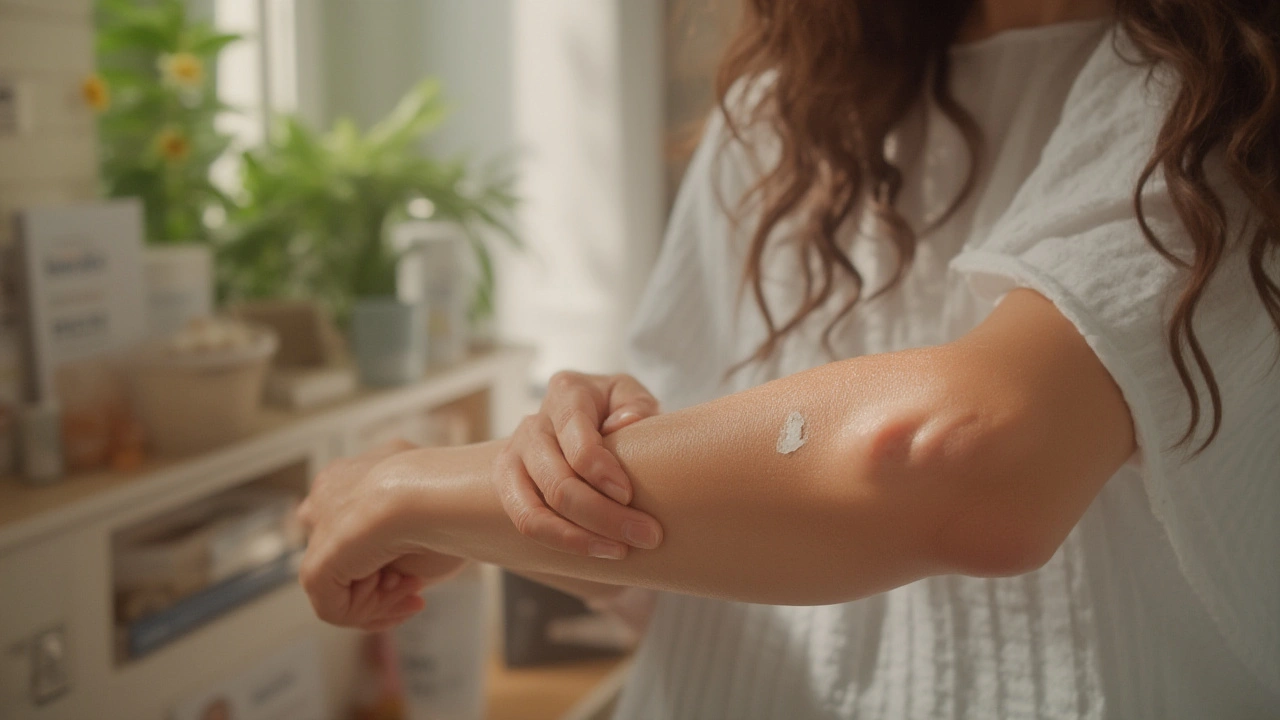Steroid Cream: What You Really Need to Know for Healthier Skin
Steroid creams pop up every time you search for ways to calm down rashes, eczema, or stubborn itchy patches. They work fast, but figuring out when to use them (and when not to) isn’t so obvious. The last thing anyone wants is thinner skin or flare-ups from using the wrong cream or applying too much.
People often reach for steroid creams for eczema, psoriasis, or allergic reactions. They’re useful for tamping down redness, swelling, and itching when nothing else brings relief. Doctors rely on these creams for everything from poison ivy to chronic skin problems, but using them without guidance can backfire. Ever noticed skin getting lighter, or even stinging, after repeated use? That’s a sign you might be overdoing it or using a product that’s too strong for the job.
There’s a huge difference between mild options (think hydrocortisone you see at the drugstore) and the high-strength stuff doctors prescribe for really tough cases. Not all steroid creams are created equal: some are safe for kids and sensitive spots like the face, while others could cause trouble if used there. The small print about side effects—like thinning skin or breakout cycles—matters, especially if you’re planning to use the cream for more than a week or two.
Here’s the part nobody tells you: Steroid creams should be applied in thin layers, just enough to cover the area. Glob it on, and you risk more harm than good. Washing hands before and after is also a smart move, so you don’t accidentally spread the medication (or pick up extra germs).
If you’re dealing with long-term issues like eczema or rosacea, a plan with your doctor makes a world of difference. Sometimes, switching to milder products, spacing out applications, or adding in barrier creams can ward off side effects. Sun sensitivity is a hidden risk—some steroid creams make your skin burn easier, so extra SPF doesn’t hurt.
Stumped by weird new symptoms—like skin getting shiny, stretch marks, or strange bruises? Stop the cream and call a doctor. These problems tend to pop up if you use strong steroids or over-the-counter creams for too long, especially on thin skin around the eyes or genitals.
Heard about steroid withdrawal? Suddenly quitting after long-term use can trigger a nasty rebound—redness, burning, or worse, even if your original rash is gone. Tapering down under a doctor’s advice works much better than going cold turkey.
Long story short, steroid creams save the day when used right. They’re not a cure-all, but with good timing, the right strength, and clear instructions, they make flare-ups a lot easier to handle. Still stuck or not sure which one is safe? Reach out to a dermatologist. Playing the guessing game with steroid ointments rarely ends well for your skin.
Temovate: Uses, Side Effects, and Essential Tips for Safe and Effective Use
Discover how Temovate (clobetasol propionate) treats stubborn skin conditions, its potential side effects, safety directions, and expert tips for best use.
Read more
